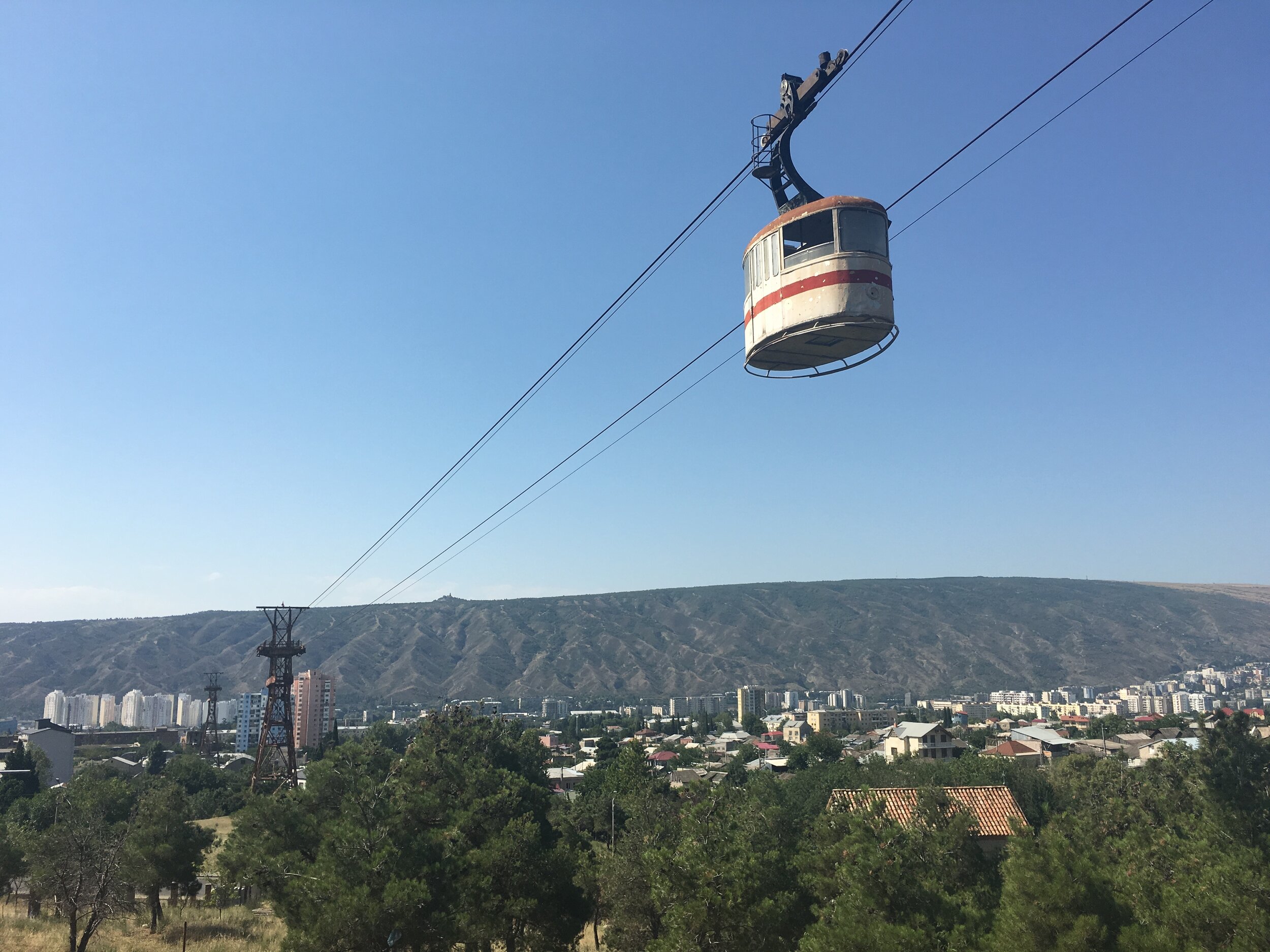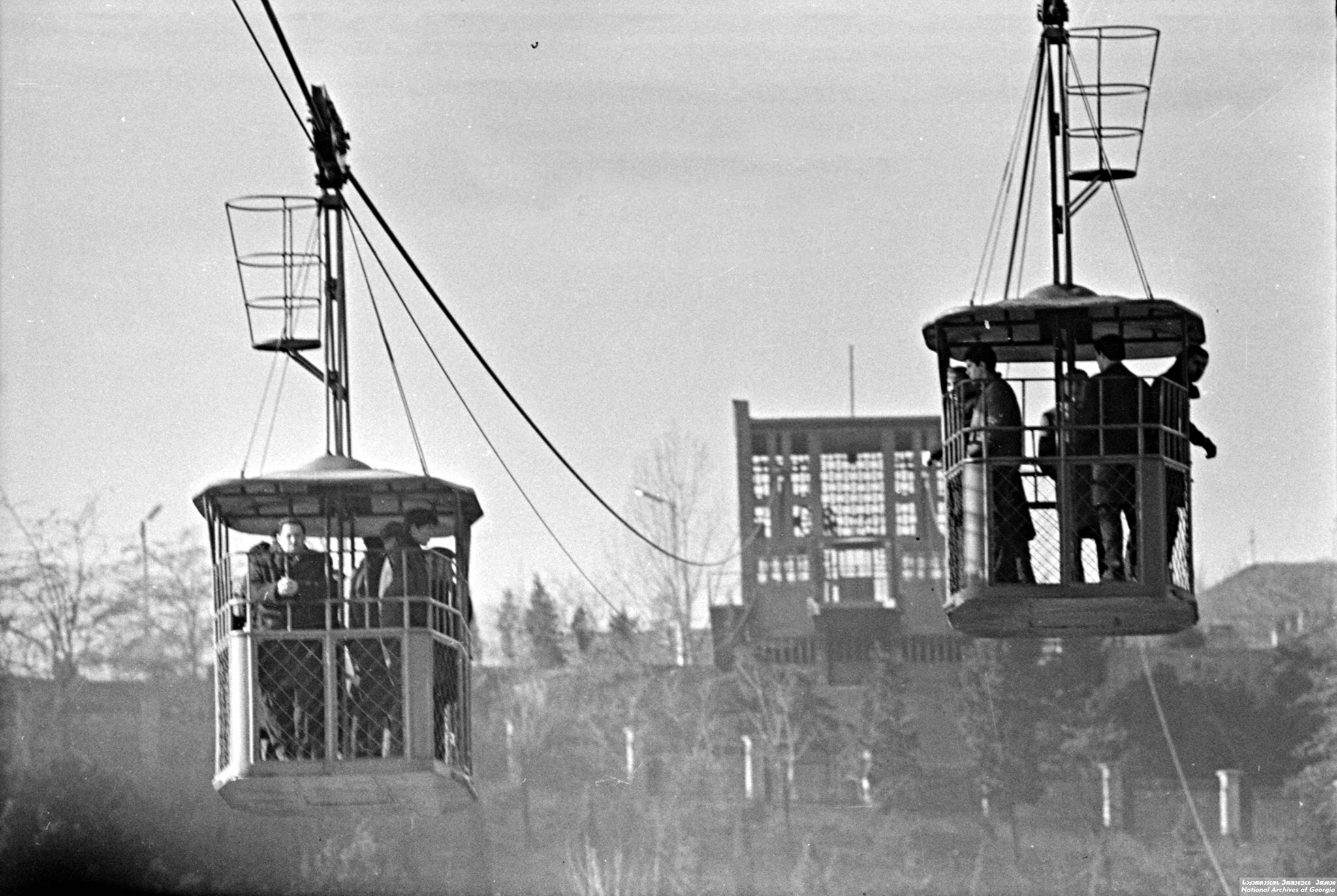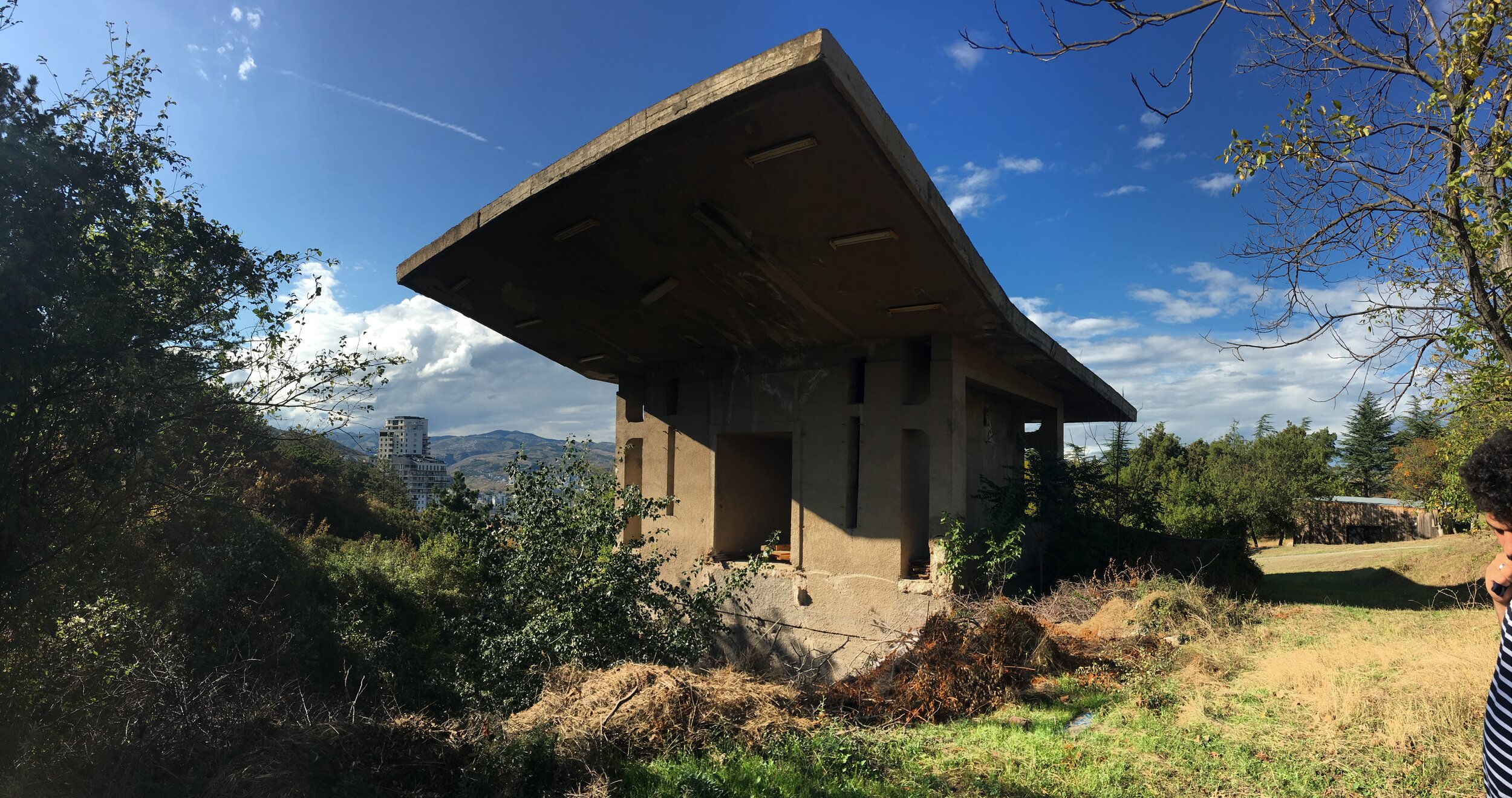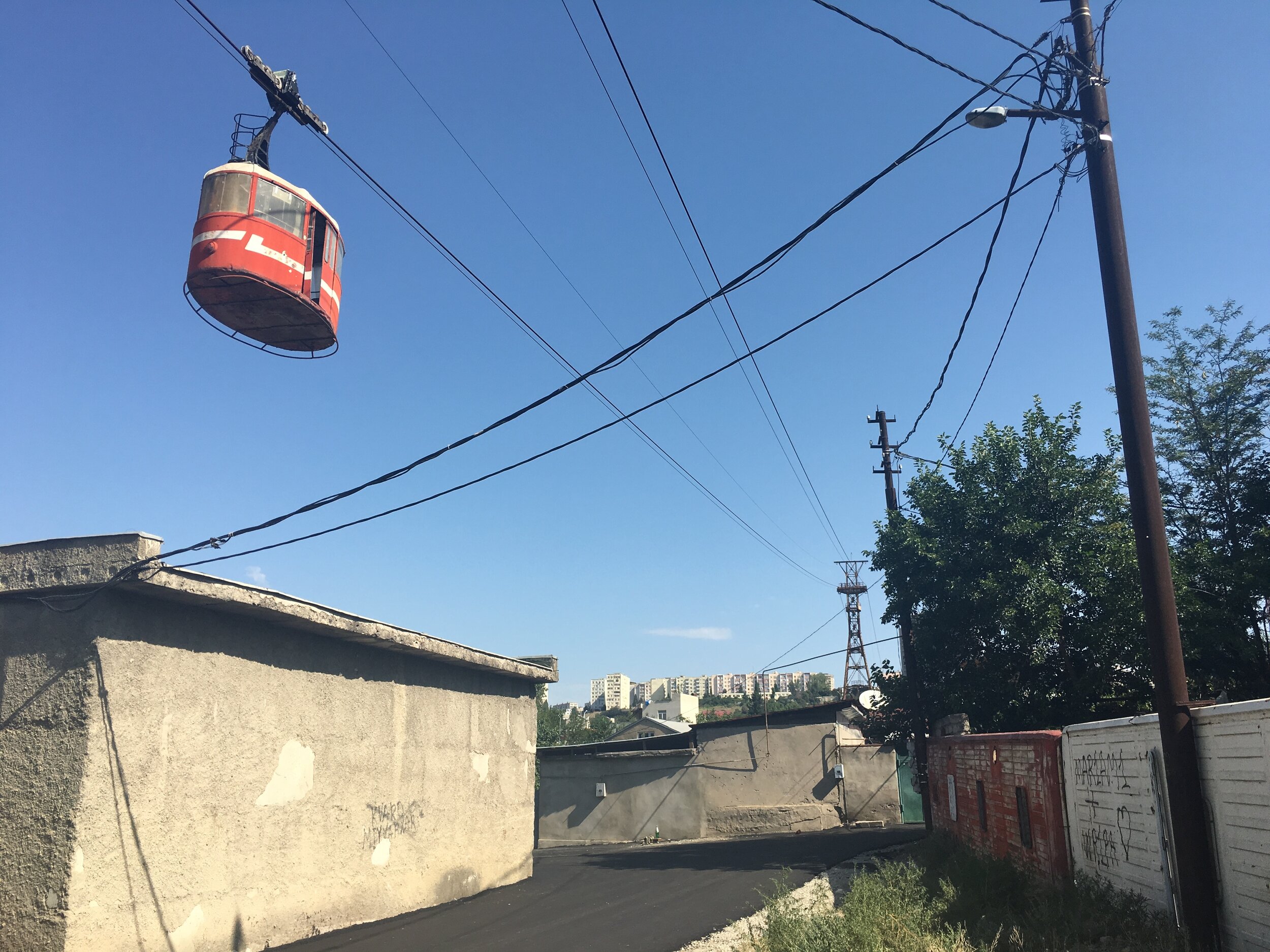URBAN MOBILITY










Architecture, Urban Mobility, and Ideology in Tbilisi’s Cable Cars
Tbilisi, Georgia is a unique global example of urban cable car infrastructure. With over half of a century of infrastructural development taking place during both socialism and capitalism, the city’s network covers a vast geographic area and represents a variety of different government transportation policies. Constructed between 1953 and 1988 under Soviet rule, then largely decommissioned in the 1990s, as of the 2010s the city’s cable car network is partially being reactivated and expanded to meet the needs of today’s tourism economy.
Early Soviet cable car lines aimed to connect city residents to Tbilisi’s peripheral mountainsides for recreational purposes, at the same time engendering communist ideology on leisure, health and mass mobility. Beginning in the 1960s, the city’s recreationally-focused cable car network was complemented with new lines facilitating worker commutes from the new microrayons into the core of the city. These cable cars passed above residential areas and connected passengers to the city’s wider public transit network where they could transfer to rail, bus, or metro. As examples of the Soviet Union’s modernization efforts, Tbilisi’s cable cars demonstrated the rise of new infrastructural technologies serving the mass citizenry.
Since the re-activation and proposed expansion of Tbilisi’s cable car network in the 2010s, the creation of lines that instead support tourism have become dominant, at times managed by private-sector companies receiving political support from the municipality. This can be witnessed at the city’s new line from Rike Park to Narikala Fortress, as well as in the dramatic, recently approved lines for Tbilisi’s Panorama project. As catalysts for market-driven urban growth, Tbilisi’s cable cars now selectively frame their surrounding environment as a tourism landscape, with scenic views of the Old City. Tbilisi’s cable car infrastructure is therefore today moving away from its role as mass public transit toward a more restricted form of privileged tourist mobility.
Our work on urban mobility includes the following:
Full list of research
PUBLICATIONS
Gogishvili, D., & Harris-Brandts, S. (2023). Up in the Air: Traces of Tbilisi’s Cable Cars. In Wheeler, A. (Ed.) Tbilisi: Architectural Guide, 166-178, Berlin, Germany: DOM Publishers.
Harris-Brandts, S., & Gogishvili, D. (2020). Lofty Ideals in Aerial Connectivity: Ideology in the Urban Cable Car Network of Tbilisi, Georgia. Eurasian Geography & Economics, 65 (3), 289-319.
Harris-Brandts, S., & Gogishvili, D. (2018). Up in the Air: Traces of Aerial Connectivity in Tbilisi. In Neuburg, K., Pranz,, S., Tseretelli, W., et al. (eds.), Tbilisi: Archive of Transition. 94-102. Niggli Verlag Publishers. Salenstein, Switzerland.





